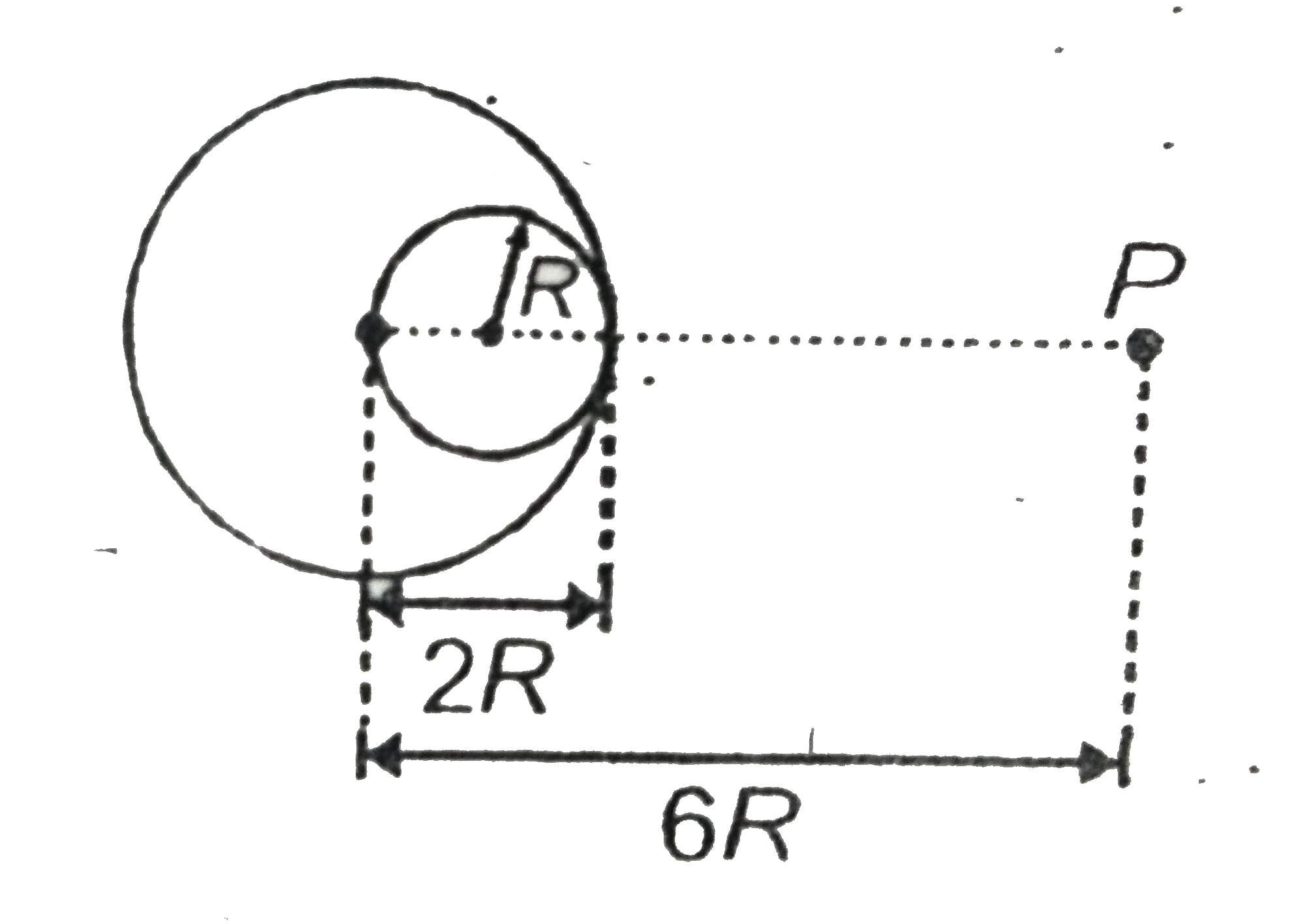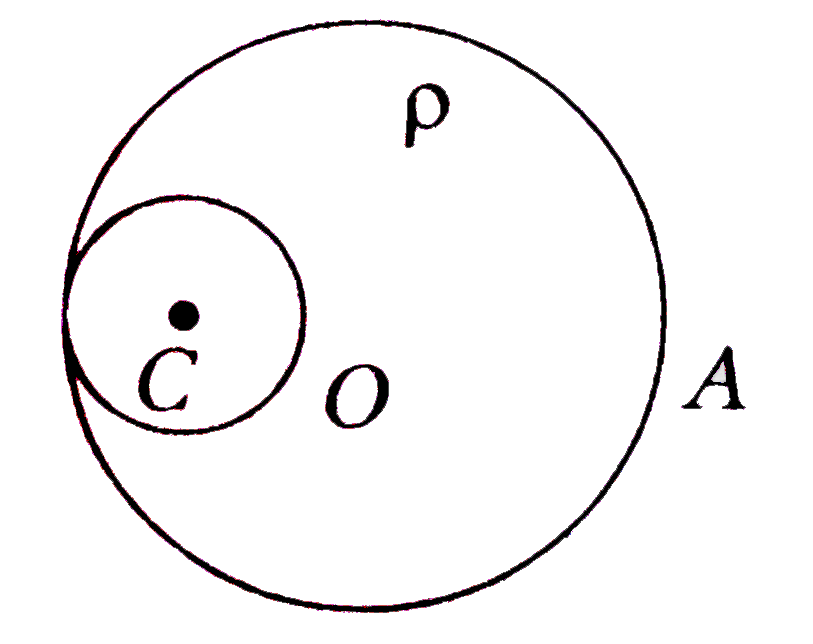A conducting sphere of radius R2 has a spherical cavity of radius R1 which is non concentric with the sphere. A point charge q1 is placed at a distance r from the centre of the cavity. For this arrangement, answer the following questions.
Electric field (magnitude only) at the center of the cavity will be :
zero
Kq1r2
Kq1r2−Kq1R21
None of these
The correct Answer is:D
To solve the problem, we need to analyze the electric field at the center of the cavity of a conducting sphere with a point charge placed inside it. Here's a step-by-step breakdown of the solution:
Step 1: Understand the Setup
We have a conducting sphere of radius R2 with a spherical cavity of radius R1. A point charge q1 is placed at a distance r from the center of the cavity. Since the cavity is non-concentric with the sphere, the charge is not at the center of the cavity.
Hint: Visualize the arrangement to understand the positions of the charge and the cavity.
Step 2: Induced Charge on the Cavity
When the point charge q1 is placed inside the cavity, it will induce a charge on the inner surface of the cavity. The induced charge will be equal in magnitude and opposite in sign to the point charge q1. Therefore, the inner surface of the cavity will have a charge of −q1.
Hint: Remember that conductors redistribute their charge in response to internal charges to maintain electrostatic equilibrium.
Step 3: Charge on the Outer Surface
Since the conducting sphere is neutral initially, the total charge on the outer surface of the sphere will be equal to the charge induced on the inner surface. Thus, the outer surface will have a charge of +q1.
Hint: The total charge on a conductor must remain constant, and any induced charge must be balanced by an equal and opposite charge elsewhere.
Step 4: Electric Field Inside the Cavity
Inside a conductor, the electric field is zero. However, within the cavity, the electric field is influenced by the point charge q1 and the induced charge −q1.
At the center of the cavity, due to symmetry, the contributions from the induced charges on the cavity surface will cancel out. Therefore, the electric field at the center of the cavity will be solely due to the point charge q1.
Hint: Use symmetry arguments to deduce that the net electric field contributions from the induced charges will cancel out.
Step 5: Calculate the Electric Field
The electric field E at a distance r from a point charge q1 is given by:
E=k|q1|r2
However, since we are interested in the electric field at the center of the cavity, we need to consider the distance from the point charge to the center of the cavity. The electric field at the center of the cavity will not be zero but will depend on the distance from the charge to the center.
Hint: Remember that the electric field is a vector quantity and depends on the distance from the charge.
Conclusion
The electric field at the center of the cavity is not zero and is determined by the distance to the point charge q1. The electric field will be directed away from the charge if q1 is positive and towards the charge if q1 is negative.
Final Answer
The electric field (magnitude only) at the center of the cavity will be given by:
E=k|q1|(r′)2
where r′ is the distance from the point charge q1 to the center of the cavity.
We have a conducting sphere of radius R2 with a spherical cavity of radius R1. A point charge q1 is placed at a distance r from the center of the cavity. Since the cavity is non-concentric with the sphere, the charge is not at the center of the cavity.
When the point charge q1 is placed inside the cavity, it will induce a charge on the inner surface of the cavity. The induced charge will be equal in magnitude and opposite in sign to the point charge q1. Therefore, the inner surface of the cavity will have a charge of −q1.
Since the conducting sphere is neutral initially, the total charge on the outer surface of the sphere will be equal to the charge induced on the inner surface. Thus, the outer surface will have a charge of +q1.
Inside a conductor, the electric field is zero. However, within the cavity, the electric field is influenced by the point charge q1 and the induced charge −q1.
The electric field E at a distance r from a point charge q1 is given by:
E=k|q1|r2
However, since we are interested in the electric field at the center of the cavity, we need to consider the distance from the point charge to the center of the cavity. The electric field at the center of the cavity will not be zero but will depend on the distance from the charge to the center.
The electric field at the center of the cavity is not zero and is determined by the distance to the point charge q1. The electric field will be directed away from the charge if q1 is positive and towards the charge if q1 is negative.
The electric field (magnitude only) at the center of the cavity will be given by:
E=k|q1|(r′)2
where r′ is the distance from the point charge q1 to the center of the cavity.
Similar Questions
A sphere of radius 2R and mas M has a spherical cavity of radius R as shown in the figure. Find the value of gravitational field at a point P at a distance of 6R from centre of the sphere.

View SolutionA non-conducting sphere of radius R has a spherical cavity of radius R/2 as shown. The solid part of the sphere has a uniform volume charge density ρ. Find the magnitude and direction of electric field at point (a) O and (b) A.

View Solution
Knowledge Check
A conducting sphere of radius R2 has a spherical cavity of radius R1 which is non concentric with the sphere. A point charge q1 is placed at a distance r from the centre of the cavity. For this arrangement, answer the following questions.
Electric potential at the centre of the cavity will be :AzeroBkq1r−kq1R1Ckq1r−kq1R1+Kq1R2DNone of theseA conducting sphere of radius R2 has a spherical cavity of radius R1 which is non concentric with the sphere. A point charge q1 is placed at a distance r from the centre of the cavity. For this arrangement, answer the following questions.
If q1 is shifted to the centre of the cavity, then: (choose the correct alternative)Aelectric field in the region outside sphere may changeBelectric potential in the region outside sphere may changeCelectrostatic energy stored in the system may changeDelectric potential of sphere may changeThere is a conductor with cavity of radius R as shown in figure. A point charge Q is placed at R/2 distance from centre of cavity.
A point P is at r distance from centre of conductor. Then,
 Acharge density at iner surface of cavity will be non uniformBcharge density at surface of conductor will be uniformCelectric field at point P is Q4πε0r2Dforce on charge Q is non zero
Acharge density at iner surface of cavity will be non uniformBcharge density at surface of conductor will be uniformCelectric field at point P is Q4πε0r2Dforce on charge Q is non zero
The electric field at a distance 3R2 from the centre of a charged conducting spherical shell of radius R is E. The electric field at a distance R2 from the centre of the sphere is :
View SolutionA solid sphere of mass M and radius R has a spherical cavity of radius R/2 such that the centre of cavity is at a distance R/2 from the centre of the sphere. A point mass m is placed inside the cavity at a distance R/4 from the centre of sphere. The gravitational force on mass m is
View SolutionThe electric field at a distance 3R/2 from the centre of a charge conducting spherical shell of radius R is E. The electric field at a distance R/2 from the centre of the sphere is
View SolutionThe electric field at a distance 3R2 from the centre of a charged conducting spherical shell of radiu R is E. The electric field at a distance R2 from the centre of the sphere is:
View SolutionA conducting sphere of radius b has a spherical cavity with its centre displaced by 'a' from centre of sphere O1. A point charged q is placed at the centre of cavity O2. Q charge is given to conducting sphere and charge q0 is placed at P, a distance c from centre O1. Further O1,O2 and P are collinear

View Solution

